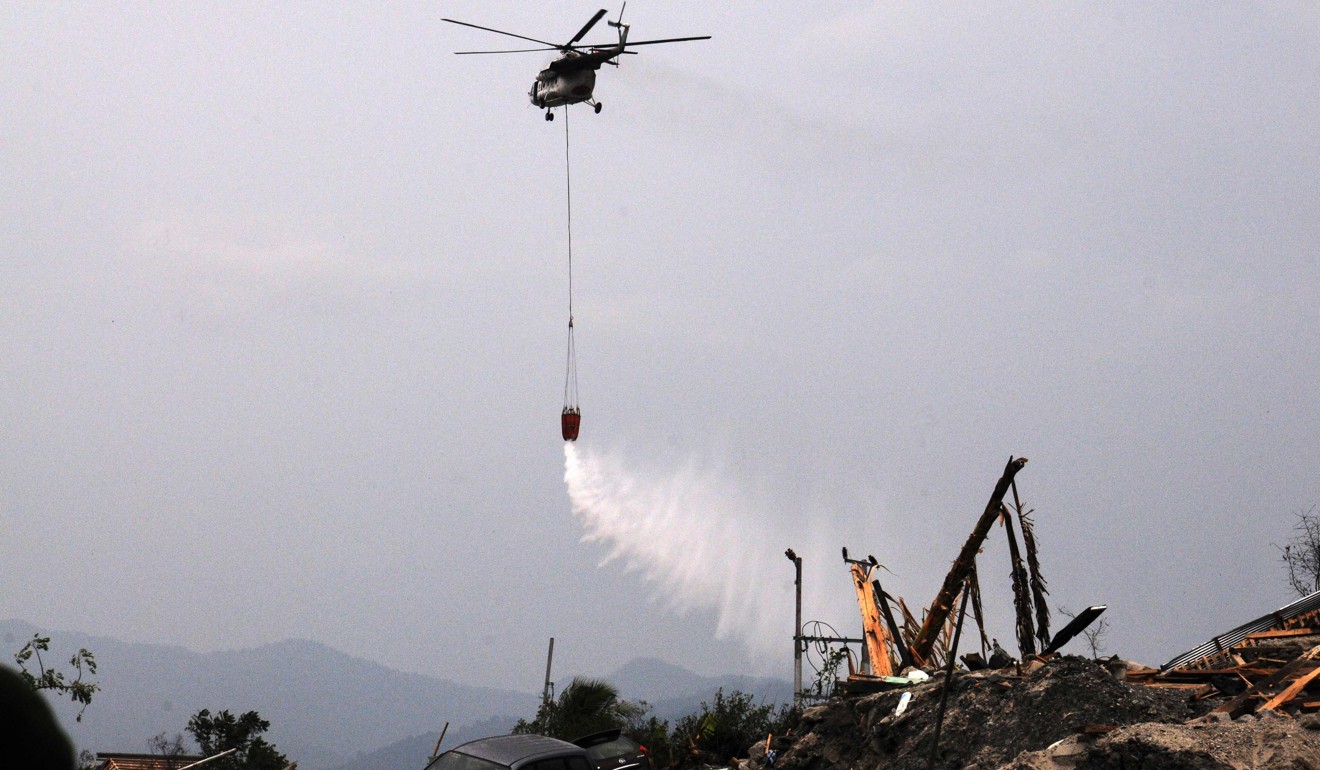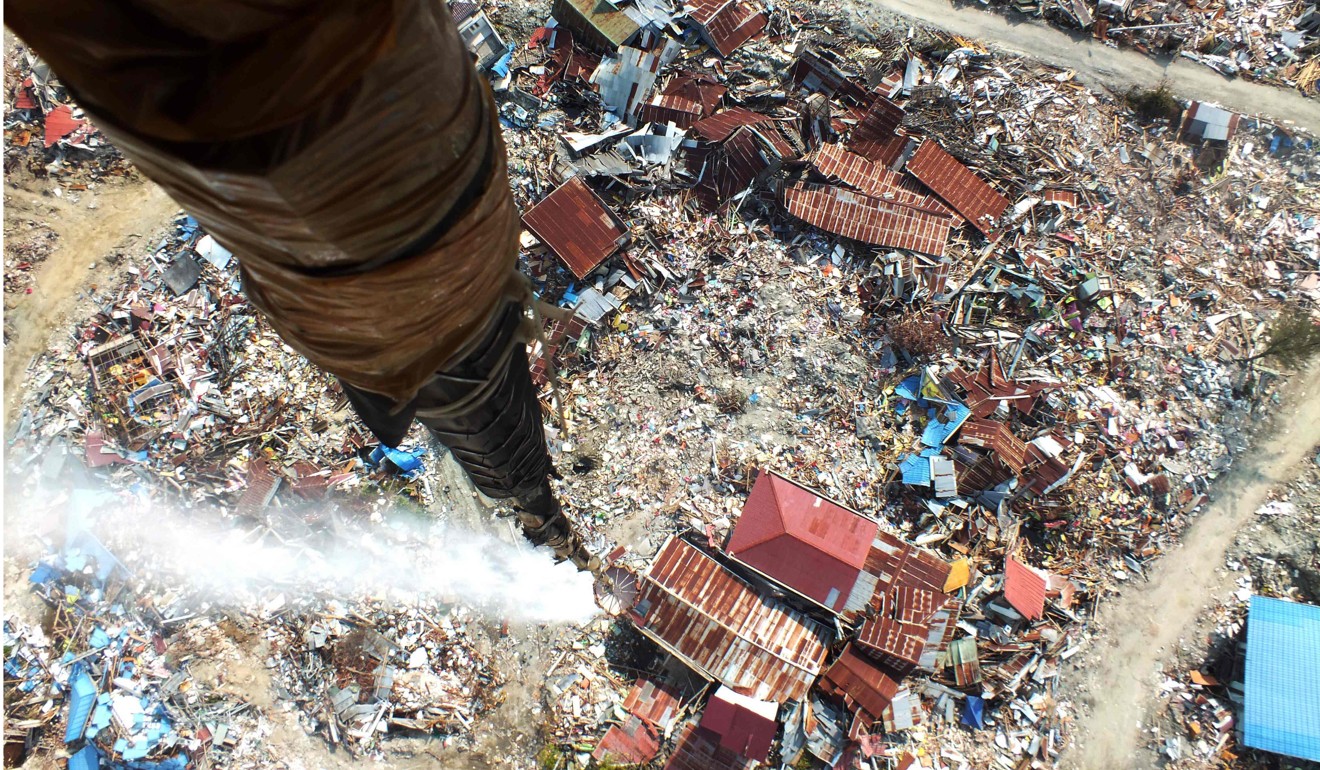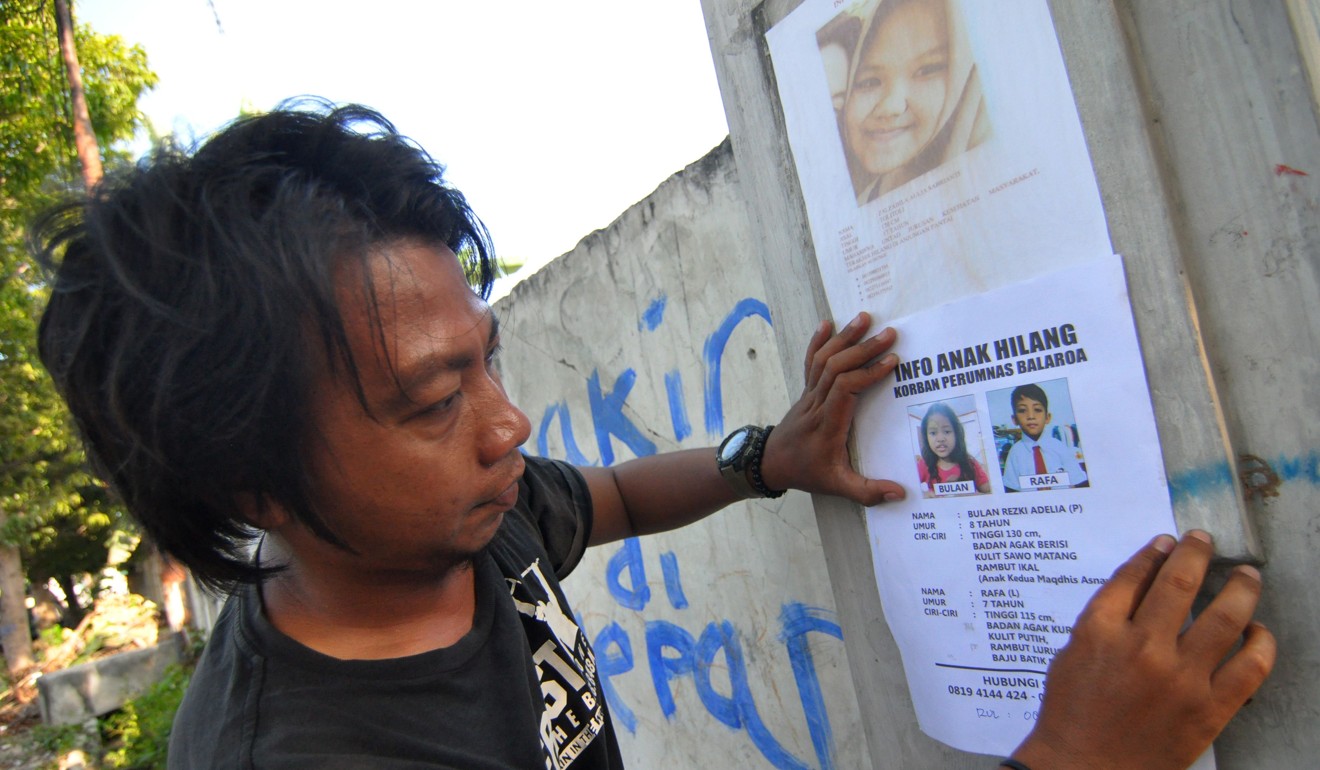
One month on, Indonesia’s quake and tsunami struck city faces major health crisis
- Aid groups warn of an increase in diarrhoea and respiratory infections plus suspected cases of mosquito-borne illnesses malaria and dengue fever
Indonesia’s quake and tsunami battered city of Palu is facing a public health crisis a month after the disaster, aid agencies have warned.
On September 28, a magnitude 7.5 quake and followed by a tsunami razed parts of Palu on Sulawesi island, killing some 2,200 people and making more than 220,000 homeless.
Thousands more are missing, presumed dead, after entire neighbourhoods were destroyed.

Desperate to stave off disease, authorities last week dropped disinfectant from helicopters on the worst-hit areas.
Indonesia’s disaster mitigation agency said the move was crucial to preventing the proliferation of disease-laden flies, cockroaches and rats.

But aid groups say there has been an increase in cases of diarrhoea and respiratory infection, while there are also suspected cases of mosquito-borne illnesses, including malaria and dengue fever.
Heavy monsoon rains predicted for the months ahead threaten to make a bad situation worse.
“It is likely we’re going to see more and more people getting sick … given how hard it is to maintain hygiene standards, with the rains providing the perfect breeding ground for mosquitoes, and with hundreds, if not thousands of bodies, believed to be decomposing in the ground,” said Selina Sumbung, chairwoman of Save the Children’s partner in Indonesia, Yayasan Sayangi Tunas Cilik.
Children are said to be particularly at risk from any illness outbreak.

The hundreds of thousands left homeless by the disaster are scattered across Palu and beyond.
Many squat outside their ruined homes or are bunkered down in makeshift camps and entirely dependent on handouts to survive.
Safe drinking water has to be trucked into encampments, while tarpaulins, blankets and tools are still in short supply in some areas.
“We know when people are living in temporary conditions [it] poses a problem for hygiene,” said Andreas Weissenberg, of the Red Cross team in Palu. “People stay closer together. It’s difficult to keep clean. They may not have access to water and latrines.”
Elsewhere, monsoon rains have already turned roads to mud and primed slopes for landslides in some remote areas – hampering access for relief teams.

Indonesia has said that damage to the devastated area has topped US$900 million while the World Bank has offered the country up to US$1 billion in loans to get Palu back on its feet.
Seventy per cent of Palu has been cleaned up and water supply will return to normal by December, Central Sulawesi governor Longki Djanggola said on Thursday.
More than 1,400 tents have been erected for classes and 1,200 semi-permanent shelters are expected to be finished in two months’ time.
For many, however, life is still far from normal.
“I just hope I can get a decent place, permanent housing and a job,” said 65-year-old Abdurrahim Laadu.

.png?itok=arIb17P0)